101.All in One
101. All in One, online edition, this year will build around the affective infrastructures of telepresence. We investigate the world after these three months of unexpected postinternet and inspect what connects us now in this physical disconnectedness and which human properties can be translated through and into the communication systems: voice, emotional expression. Can we now feel touch over the distance and how likely will telehaptics become the future of human relationships
20.06.
12:00-00:00
12:00-00:00
online-festival
Festival program
Pt.1 Telemechanics
June 20 , 12:00 - 00:00*
12:00
Natalia Fedorova

Natalia Fedorova is a curator, artist and researcher working in the field of science art and new media. As a curator she has founded 101.Science art festival held at a number of venues in St Petersburg including New Stage of Alexandrinsky Theatre and Planetarium #1. Her work as a curator also includes media art laboratories in the Theatre of Nations (Moscow) and Big Drama Theatre (St Petersburg), Garage Museum of Contemporary Art (Moscow), National Centre for Contemporary Art ( Moscow). Her artistic work was demonstrated at such festivals as Manifesta, ISEA, EVA.
12:10
Artist talk. Stelarc
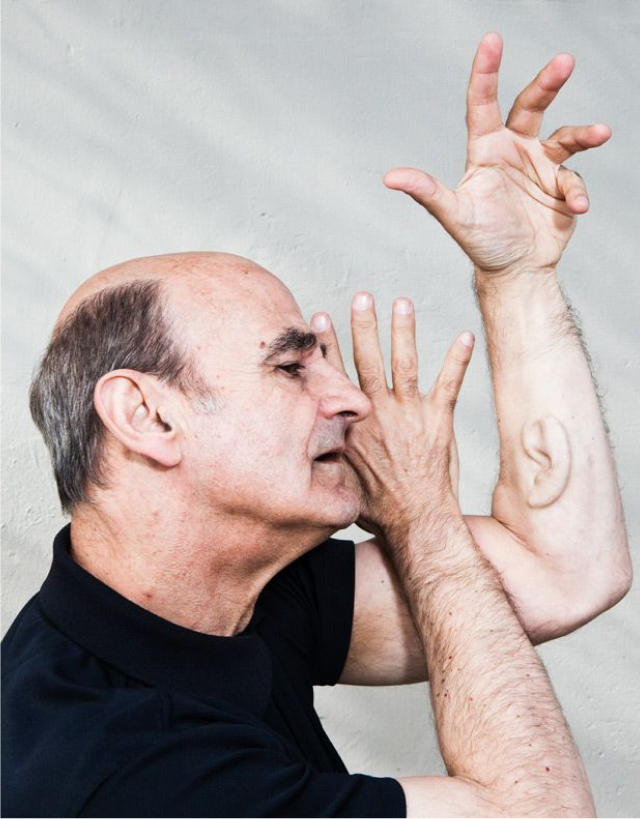
Stelarc is a performance artist who has visually probed and acoustically amplified his body. He has made three films of the inside of his body. Between 1976 - 1988 he completed 26 body suspension performances with hooks into the skin. He has used medical instruments, prosthetics, robotics, Virtual Reality systems, the Internet and biotechnology to engineer intimate and involuntary interfaces with the body. He explores Alternate Anatomical Architectures with augmented and extended body constructs.
12:00 - 14:00
12:40
Artist talk. ::vtol::
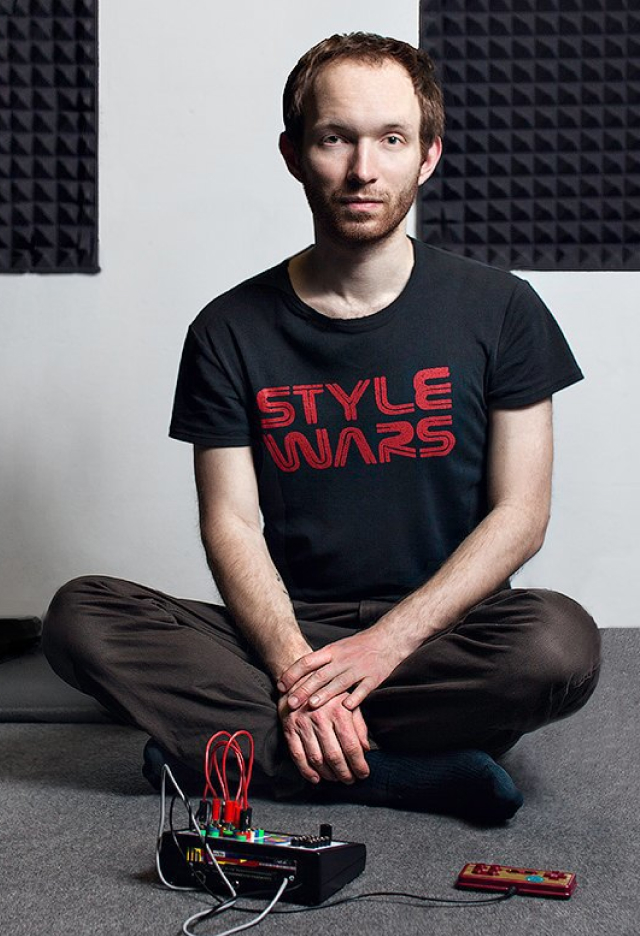
Dmitry Morozov aka ::vtol:: is a transdisciplinary artist and researcher. He focuses on contemporary media arts including sound, robotics and installation, placing special emphasis on the link between emergent systems and new kinds of technological synthesis.
13:40
Screening: Welcome to Erewhon
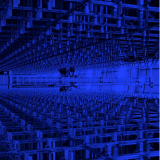
Welcome to Erewhon is a loose adaptation of a philosophical fable published in 1872 by the British writer Samuel Butler. In the fictional city of Erewhon, automation is considered as an evolution of the "machine" species comparable to the evolution of biological species, but at a faster pace. This hypothesis governs the habits and inhabitants, to the smallest aspects of their lives. Humans, animals, and plants are linked in a cloud that processes all mental matter. Algorithms can give voice to the dead. This is how the spirit of Samuel Butler can still circulate through images of the city.
* Moscow time GMT+3
13:10
Prof. Dominik Bösl
Professor of Digital Sciences, Automation and Leadership at Hochschule der Bayerischen Wirtschaft in Munich. Roboticist, currently working as Head of Robotics at Festo AG. Dominik believes in the need for Robotic & AI Governance. As renowned expert on technology ethics and IEEE TechEthics Ambassador, he is consulting organizations like the UN and the European Commission.
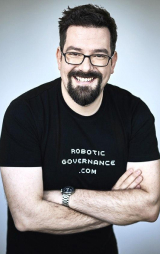
Watch Video
Pt.2 Teleaffect
14:00
Ksenia Fedorova, "Sense Act and Proprioceptive Art"
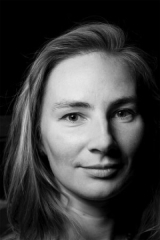
14:00 - 16:00
PhD, a media and media art researcher and curator. She is the author of Tactics of Interfacing: Encoding Affect in Art and Technology (MIT 2020) and the co-editor of Media: Between Magic and Technology (2014, in Russian), her other publications include articles in Leonardo Electronic Almanac, Media & Culture Journal, Acoustic Space, Dialog of Arts, and collective volumes. In 2007 - 2011, she was an initiator and curator of the "Art. Science. Technology" program at the Ural branch of the National Center for Contemporary Arts (Ekaterinburg, RU). She is currently a postdoctoral fellow at the Institute for Art and Image History at Humboldt University in Berlin.
14:30
William Uricchio, "Almost There: lessons in partial presence from telegraphy to television"

Media scholar, professor of Comparative Media Studies at the MIT, principal investigator of the MIT Open Documentary Lab and Co-Creation Studio, professor of Comparative Media History at Utrecht University in the Netherlands. He has been awarded Guggenheim, Humboldt and Fulbright fellowships and the Berlin and Mercator prizes; and was Holtzbrinck Fellow at the American Academy in Berlin. His publications include Reframing Culture; We Europeans? Media, Representations, Identities; Media Cultures; Many More Lives of the Batman; and hundreds of essays and book chapters, including a visual "white paper" on documentary innovation (momentsofinnovation.mit.edu). His most recent book is COLLECTIVE WISDOM: Co-Creating Media within Communities, across Disciplines, and with Algorithms.
15:00
Satomi Sugiyama, "Still, we cannot touch: After decades of perpetual contact and absent presence"
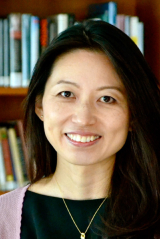
Satomi Sugiyama is Professor of Communication and Media Studies. She received her PhD in Communication Studies at Rutgers University with her dissertation on mobile communication and fashion. Her research and teaching interests include emerging communication technologies and interpersonal relationships, culture, and fashion studies. Her current research also includes an investigation into images of wearable technologies and the emoji use among youth. In recent years, she served as a thesis jury member and a guest lecturer for the Master of Advanced Studies in Interaction Design, SUPSI, Lugano, Switzerland.
15:30
Screening. Welcome to Erewhon

Welcome to Erewhon is a loose adaptation of a philosophical fable published in 1872 by the British writer Samuel Butler. In the fictional city of Erewhon, automation is considered as an evolution of the "machine" species comparable to the evolution of biological species, but at a faster pace. This hypothesis governs the habits and inhabitants, to the smallest aspects of their lives. Humans, animals, and plants are linked in a cloud that processes all mental matter. Algorithms can give voice to the dead. This is how the spirit of Samuel Butler can still circulate through images of the city.
«По-прежнему, касание невозможно:
спустя
десятилетия постоянного контакта и присутствия in absentia»
спустя
десятилетия постоянного контакта и присутствия in absentia»
Ксения Федорова, «Чувственное
действие и
проприецептивный
акт»
действие и
проприецептивный
акт»
Уильям Уриккио
«Почти что: телеграфия и телевидение — уроки
частичного присутствия»
«Почти что: телеграфия и телевидение — уроки
частичного присутствия»
Watch
Video
Video
Pt.3 Telehaptics
16:00
Artist talk. Ken Rinaldo
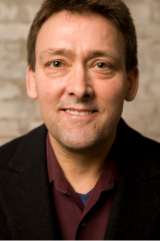
16:00 - 18:30
Interdisciplinary artist and professor at College of Arts & Sciences at The Ohio State University. His works have been commissioned and displayed at museums and galleries such as: The Biennale of Electronic Arts Perth Australia, Exit Festival France, Transmediale Berlin (Germany), The OK Center for Contemporary Art (Linz, Austria), ARS ELECTRONICA (Linz, Austria), The Kiasma Museum of Contemporary Art (Helsinki, Finland); The Museum of Contemporary Art, Chicago, etc.
16:30
Alexander Kapitonov and Independent robot artist
Gaka-chu
Gaka-chu
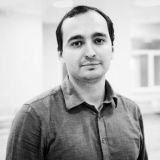
PhD in Technical Sciences, dean of the Faculty of Infocommunication Technologies and associate professor at the Faculty of Control Systems and Robotics at ITMO University. Regular participant of international and national conferences. Consultant at the Ioffe Institute's Laboratory of Physics of Semiconductor Heterostructures on the subject of control of metal-organic vapor-phase epitaxy. Coach of national competition-winning robotics teams.
17:00
Vladimir Belyy
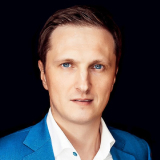
Head of the Alpha Robotics Venture Foundation
http://roboticsventure.group/ Scientist, winner of the British Invention Award for his contribution to the development of science. Since 2005, under his leadership, comprehensive innovative projects have been implemented in the field of robotics and artificial intelligence, which are widely in demand not only in Russia but also abroad, in business and at the level of countries' interests.
http://roboticsventure.group/ Scientist, winner of the British Invention Award for his contribution to the development of science. Since 2005, under his leadership, comprehensive innovative projects have been implemented in the field of robotics and artificial intelligence, which are widely in demand not only in Russia but also abroad, in business and at the level of countries' interests.
18:00
Video artist talk. Frederik de Wilde
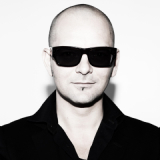
17:30
Artist talk. Gwenola Wagon, Stéphane Degoutin and Pierre Cassou-Nogues
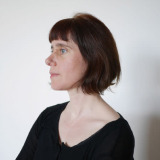
Artist and professor in the Art Department of the Université de Paris 8. She is co-founder with Alexis Chazard of the artist's group Cela Étant, and co-founder of the project Nogo Voyages with Stéphane Degoutin in 2007 as well as the project LOPH in 2011. She has produced numerous sound and moving image installations in France and abroad including Blackpool Manchester, Globodrome, Hypnorama, Discothèque sauvage, Mute and Cyborgs dans la brume. Curator of the exhibition Voyages dans les données du monde, at the Rencontres de la photographie, Marseille 2013. Co-director of Media Médiums, Research on technology and the spirit world. https://gwenolawagon.com/
Frederik is an inter- and transdisciplinary artist working on the interstice of art, science and technology. Frederik De Wilde's artistic praxis situates itself on the interstice of art, science and technology exploring notions of the invisible, inaudible and intangible. Frederik is fascinated by "dark" ecologies and invisible territories and the radical shifts technology imposes on society and our "environment". He received the 2010 Ars Electronica Next Idea Award and the Best European Collaboration Award between an artist and scientist.
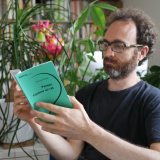
Stéphane Degoutin, born in 1973 in Toronto, is an artist, writer, director and researcher. His research focuses on the societal implications of infrastructure and posthumanity. The majority of his work is built in partnership with Gwenola Wagon. They wonder about places on the Internet, algorithms, urban lifestyle, work and conduct experiments on behavior. In 2006, Stéphane Degoutin published Prisoners Volunteers of the American Dream, an essay on the phenomenon of closed residential developments in the United States. In 2019, he is defending a thesis in spatial planning and urbanism entitled Société-Cloud7, under the supervision of Antoine Picon at the University of Paris-Est-Marne-la-Vallée. He teaches at the National School of Decorative Arts.
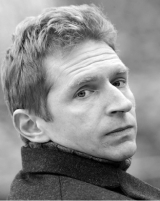
Pierre Cassou-Noguès is a writer and a philosopher. The key question, in his work, concerns the role of fiction in the constitution of forms of life and forms of rationality. His last book Technofictions (Cerf, 2019) is a collection of short stories which investigates the imaginary underlying several contemporary technological apparatus.
Pierre Cassou-Noguès is professor in the philosophy department of University Paris 8-Vincennes-Saint-Denis. He is also co-editor of the journal SubStance.
Pierre Cassou-Noguès is professor in the philosophy department of University Paris 8-Vincennes-Saint-Denis. He is also co-editor of the journal SubStance.
Watch
Video
Video
Pt. 4 Telepresence
18:30
Artist talk. Anastasia Alekhina
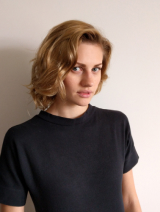
18:30 - 21:00
Transdisciplinary artist and researcher. The finalist of the grant program "Art and Technology 2019" Museum Garage and the finalist of the contest "Nova Art 2019". Her works can be found in the Multimedia Art Museum's collection and are on permanent display as part of the New Anthropology art&science project. She works in the technological genres of art at the intersection of various disciplines and explores the aesthetic and existential issues of contemporaneity and the future of wearable devices and corporeality. She works with sound in experimental directions, using self-made analog instruments, computer algorithms and "found sounds".
19:00
Artist talk. Patrick Lichty
Patrick Lichty is a media "reality" artist, curator, and theorist who explores how media and mediation affect our perception of reality. He is currently an Assistant Professor of Animation at Zayed University, UAE.
19:30
Artist talk. Anaisa Franco
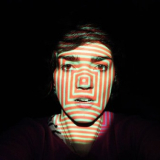
An artist. Since 2006 she has been developing works in Medialabs and residences at Medialab Prado, Mecad, MIS, Hangar, Taipei Artist Village, Mediaestruch, Cite des Arts in Paris and ZKU in Berlin. She has been exhibiting in America, Europe and Asia.
20:30
Screening Khoreku. The stories of the Tuhard tundra

20:00
Artist talk David Bowen
David Bowen is a studio artist and educator whose work has been featured in numerous group and solo exhibitions nationally and internationally. Bowen's work is concerned with aesthetics that result from interactive, reactive and generative processes as they relate to intersections between natural and mechanical systems. He is currently an Associate Professor of Sculpture and Physical Computing at the University of Minnesota, Duluth.
"Horeku. The stories of the Tuhard tundra" is a multimedia anthropological art project. While working on the project, the artists made two expeditions to the Tukhard tundra to live with nomadic reindeer herding Nenets family. They spent about a month in the tundra talking with nomads and collecting audio and video material. The VR-camera view is still unusual for us, and has not yet become part of the visual language of mass media, politics, journalism, and other agents that speculate on media images. This situation has become the basis for working with the material and rhythm of the film: the camera observes everything that's happening around, without allocating priority images with a picture frame. Site of the project: horeku.ru
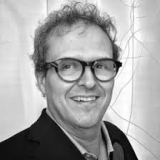
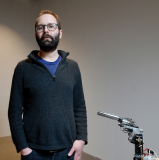
Watch
Video
Video
Pt.5 Telecorporeality
21:00
Artist talk. Аnnа Tolkacheva, Аndrey Nosov
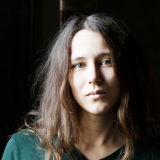
21:00 - 23:00
Anna Tolkacheva. Media artist, curator, poet, researcher. She is a coorganizer of publishing house Red Swallow. Her works participated in a big number of exhibitions, screenings and festivals inside and outside of Russia. She got Gran Prix in International Extra Short Film Festival 2014, VideoPoetry Film Festival The Fifth Leg (2012, 2016). At 2013-2014 she got Google Award for research on the project Revolutionary events prediction by social media.
21:30
Eugene Malyshkin
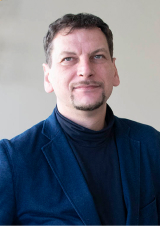
PhD, author of several articles on memory structures and distribution. Co-author of the book "Two metaphors of memory" (St. Petersburg State University, 2011), co-author and editor of the collective monograph "On Distribution: Practices and Concepts" (RCHA, 2020). Sheringist, professor of the Faculty of Liberal Arts and Sciences of St. Petersburg State University.
22:00
Artist talk. Floriama Candea
Floriama Candea is a cultural manager and multimedia artist. She completed an M.A. at the Center for Excellence in Image Studies (CESI) in 2016 and she holds a BA from the National University of Arts, Bucharest, specializing in intermedia. She is a co-founder of Qolony, an art and science NGO promoting the use and potential paths of collaboration between scientific institutions and the arts. Her works often make use of experimental artistic procedures to bring about renditions of image and object morphologies. She challenges the way memory, cognition, perception and taxonomy are set in motion as mechanisms in the subjective relation with the world.
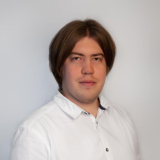
Curator, video artist, media producer. Co-founder of the Red Swallow Publishing House. Researcher of the Volga branch of the NCCA (2011-2017).
22:30
Artist talk. Denis Protopopov
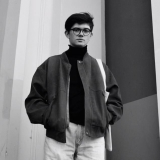
Artist working at the intersection of research, technology, media, visual and performing arts. He is the director of the "4.48" media play. Winner of the Take-off project award. Expert in the new media field of studies. https://denisprotopopov.ru/
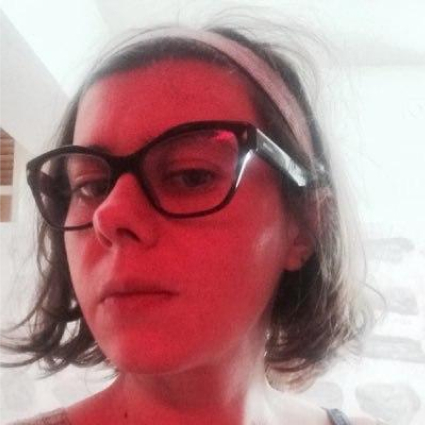
23:00
Generative music performance. Renick Bell
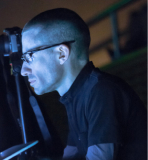
An American musician, programmer, and teacher based in Tokyo, notable as a pioneer of live coded music performance including at algoraves, and for his algorithmic music releases. Bell creates his music using his self-built live coding system Conductive. Some notable performances include a duo with Fis at the Berlin Atonal festival in Berlin in August 2017 and a solo performance at the Unsound Festival in Krakow in 2018.
Watch
Video
Video
Curators
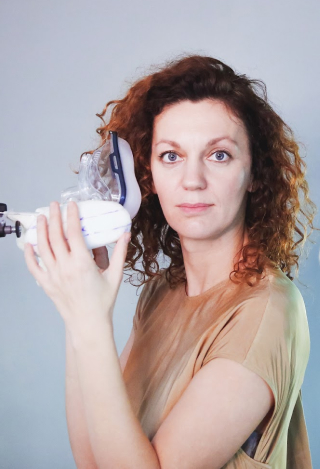

Natalia Fedorova is a curator, artist and researcher working in the field of science art and new media. As a curator she has founded 101.Science art festival held at a number of venues in St Petersburg including New Stage of Alexandrinsky Theatre and Planetarium #1. Her work as a curator also includes media art laboratories in the Theatre of Nations (Moscow) and Big Drama Theatre (St Petersburg), Garage Museum of Contemporary Art (Moscow), National Centre for Contemporary Art ( Moscow). Her artistic work was demonstrated at such festivals as Manifesta, ISEA, EVA.
Aliya Sakhariyeva is the Head of the Art and Science Center at ITMO University, administers the Master's program in Art&Science and the Art.ITMO.Residency program for new media artists. Warwick University graduate (BA in Economics, Politics and International studies) and current art history student, Aliya is interested in science art, the relationship between art and politics, as well as arts and cultural management.
Partners


ITMO University
New Media Laboratory, The new stage of the Alexandrinsky Theater

Content Oriented Web
Make great presentations, longreads, and landing pages, as well as photo stories, blogs, lookbooks, and all other kinds of content oriented projects.
Concept of the festival
This is definitely the end of the global world as we used to know. We all have similar isolation experience and yet we are not together in a tangible way. One of the goals of art today is to formulate this experience.
We possibly were never moving freely, but this movement was the basis of our activity. Those same information technologies that surveilled and separated us began to connect, without ceasing to belong to global corporations. Free movement remained available only to the goods and machines. Unprecedentedly free, telepresence becomes the central theme of the All in One online festival. In a series of online discussions, artist talks and lectures, we want to understand what can be transmitted through the distance: the texture of voice, the warmth of sight, emotional attitude. Smell, touch? What can change our emotional ecosphere over the distance. Telehaptics - touch over the distance - is the possibility we want to investigate us and make our sensations change?
Perhaps the Internet has already really become that post-Internet, the existence of which we did not even suspect. Does this mean that new restrictions will be put, or telepresence – will remain uncensored, but only readable. What is included in it and what is not? Do education and art feel convenient in Zoom?
Before the pandemic, we wanted to dedicate the question, how machines manipulate people. Now it's clear that the ethical optics needs to be recalibrated – now we would like to investigate what connects people, except for communicative machines, and which of these connections will survive the pandemic. The development of AI suggests the next step in the evolution of technology – reproduction without humans. It will be the world of machines for the machines, in which the role of people is yet to be redefined. Will future universities teach not to work? Will communication between individuals be reduced to a table of emoticons that is equally available to machines, people, and animals. Is it possible in the structure of this surveillance capitalism to talk about the individum at all or will it be a dividum, whose parts of personality will be safely stored on the remote servers.
We possibly were never moving freely, but this movement was the basis of our activity. Those same information technologies that surveilled and separated us began to connect, without ceasing to belong to global corporations. Free movement remained available only to the goods and machines. Unprecedentedly free, telepresence becomes the central theme of the All in One online festival. In a series of online discussions, artist talks and lectures, we want to understand what can be transmitted through the distance: the texture of voice, the warmth of sight, emotional attitude. Smell, touch? What can change our emotional ecosphere over the distance. Telehaptics - touch over the distance - is the possibility we want to investigate us and make our sensations change?
Perhaps the Internet has already really become that post-Internet, the existence of which we did not even suspect. Does this mean that new restrictions will be put, or telepresence – will remain uncensored, but only readable. What is included in it and what is not? Do education and art feel convenient in Zoom?
Before the pandemic, we wanted to dedicate the question, how machines manipulate people. Now it's clear that the ethical optics needs to be recalibrated – now we would like to investigate what connects people, except for communicative machines, and which of these connections will survive the pandemic. The development of AI suggests the next step in the evolution of technology – reproduction without humans. It will be the world of machines for the machines, in which the role of people is yet to be redefined. Will future universities teach not to work? Will communication between individuals be reduced to a table of emoticons that is equally available to machines, people, and animals. Is it possible in the structure of this surveillance capitalism to talk about the individum at all or will it be a dividum, whose parts of personality will be safely stored on the remote servers.
We invite 20 min artist talks and digital art projects
Dates of the event 20-21 June
